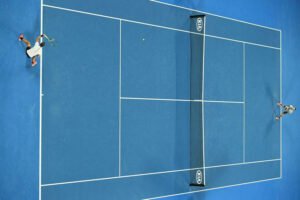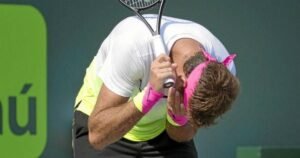Sport, whatever it may be, for children it must be a space for enjoyment, leisure and play. It's of utmost importance that sports initiation is approached from a playful approach; it should not be oriented towards competition, performance or success. According to Domingo Blazquez Sanchez, Bachelor of Physical Education and Doctor of Philosophy and Educational Sciences, it doesen't matter much that the child learns sports techniques prematurely, it's much more important that he expands the multiple possibilities of movement through games or another tasks. It must be clarified that it's not about introducing any type of task or game, it's necessary to analyze and choose the tasks or games to propose so they're useful. When the child learns to run, throw and catch, he's already getting started in sports, because each of these aspects are part of sports practice. Knowing how to choose them, stimulate them and provoke them correctly is ultimately the beginning of sports initiation.
I once heard Pablo Aimar, a great soccer player in the past and a great trainer and coach in the present, say: “I don't like to say the word work when I do exercises with children. I try to get that word to them as late as possible. It's inevitable, they will hear it at some point, but I am not going to say it. Children don’t work, children play”. The transition between the age of play and the age of sports competition should not be premature.
According to different authors, the age of acquisition of the technique is between 8 and 12 years. It's from the age of 12 when a stable attitude towards competition appears that determines the attraction or, on the other side, the rejection of athletes towards competition. Therefore, it would be unwise to involve children too early in an intense competitive process. Personally, I do not believe that the times of all children are the same nor that ages should be taken as something absolute, but they are useful references to understand that learning can only take place when the child is ready.
Our sport in particular, in case anyone doesn't know it yet, is one of the most complex. The sports that present the greatest difficulties for learning are those that require more than one element for their practice. Since there are two elements (racquet and ball), the variables are multiplied. If after years of playing tennis we still hit some balls with the frame, imagine how difficult it can be for a child who is picking up the racket for the first time! It's clear that children will acquire new skills if they're stimulated, supported and encouraged every day. But let's never forget to play.
Blazquez Sanchez, D and others (1995) Sports initiation and school sports. Ed.Inde. Barcelona. Cap: The age of initiation: Dress me slowly because I'm in a hurry and choose the most appropriate sport.
Malina, M. (1986) Readiness for competitive sport, in M.R. Weiss and Gould (eds.), Sport for children and youths, Champaign, Human Kinetics Publishers.





